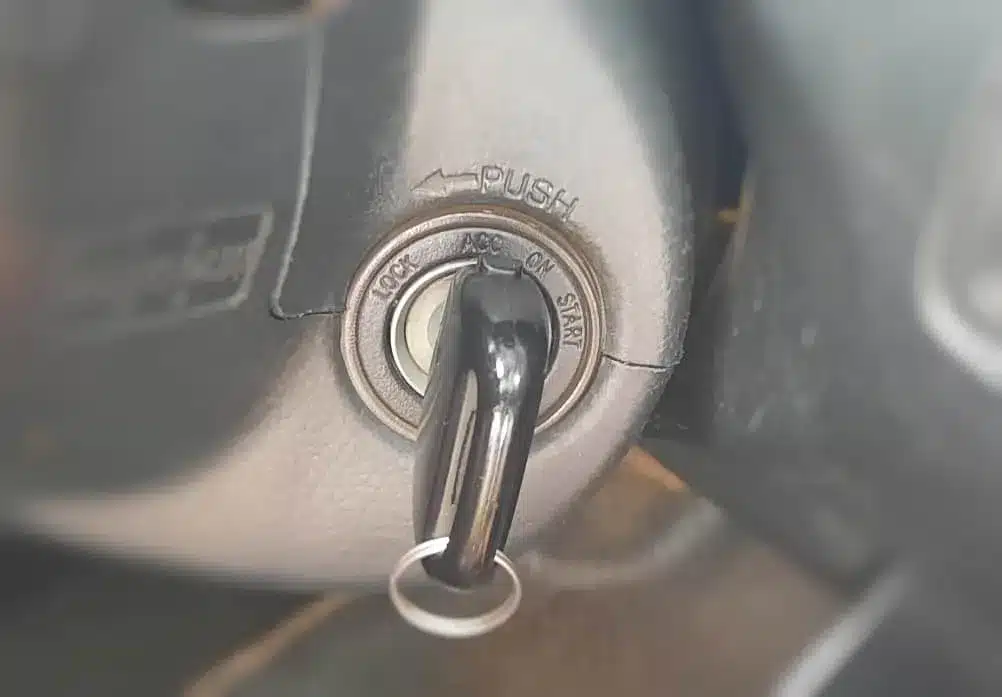
Does ACC Drain Car Battery
ACC will not drain your car battery. ACC mode does not use up the battery. However, switching many electrical gadgets when on ACC mode can drain the battery. Adaptive Cruise Control(ACC), is an intelligent safety system that automatically adjusts the acceleration and braking while maintaining a safe distance from the vehicles ahead. It is controlled through a sensor or camera on the steering wheel and canceled through braking or by a button.
ACC does not control the vehicle entirely, but the driver does it manually. It helps the driver keep a steady speed at a given moment. The driver sets their preferences regarding; distance between the vehicle ahead, driving mode, speed limits, and road curvature, among others.
How ACC Works
An ACC is also known as active cruise control, radar cruise control, Autonomous cruise control, or intelligent cruise control. The driver puts on the system through a button, accelerates then sets the desired speed. It regulates the speed of a vehicle to maintain a safe distance while in traffic. The ACC determines the distance from the nearest vehicle via a digital signal processor determining a safe distance between them. In doing so, it could decelerate and accelerate as required.
ACC System Components
ACC Module
This module receives data from the sensor through a digital signal processor and determines whether their distance from other vehicles is safe.
Instrument Cluster
The instrument cluster processes information from the engine and ACC modules and relays the information to the driver.
Engine Control Module
It controls the engine throttle based on data supplied by the instrument cluster and ACC module.
Brake Control Module
This module checks the speed and brakes when necessary.
Switches
The cruise switches turn the system on or off and set the speed limits per the driver’s preferences. The brake switch, on the other hand, monitors the braking system. If the driver brakes manually, it sends a signal to the system.
Brake lights
The brake lights illuminate with automatic braking or when the driver brakes manually.
Control Area Network (CAN)
CAN is an automotive standard network that determines a message priority. It transmits the higher priority messages first.
How To Cancel Cruise Control Operation
The cruise control operation can be canceled automatically or manually by the driver. The conditions that cancel the ACC operation are; manual braking, when the OFF button is pressed, speed is below 25miles per hour, or the system is damaged. In a manual transmission, pressing a clutch pedal might deactivate the system. Some vehicles have a memory function that allows the driver to resume the set speed limit even after manual braking.
ACC system Failure
When your cruise control system goes off unexpectedly without pressing the brake pedal, it is a sign that the system has a problem that needs fixing. Another sign of ACC system failure is when it fails to go off with pressing the brake pedal. When the control switch fails, it causes the vehicle to continue accelerating, which can cause overheating causing damage to engine components. Below are some reasons that can cause Adaptive Cruise Control system failure;
- Brake light switch fault. The ACC system will not function if it can not detect the braking light system.
- Faulty brake lights. The ACC system does not activate if the braking lights are not functioning. Braking lights can blow, deactivating the system.
- Spiral cable fault. When faulty, the spiral cable will not be able to connect electrical circuits in the steering wheel with those in the steering elements.
- Faulty engine or transmissions.
- Damaged or blown fuses and relays
- Faulty vehicle speed sensor. The ACC systems rely on this sensor to regulate the vehicle speed. If damaged, the ACC cannot function as desired.
- A faulty automatic brake sensor (ABS) deactivates the ACC.
- Electrical fault. Problematic source voltage, wiring harness, and connectors could automatically disable the system.
Pros And Cons Of ACC System In A Car
Pros
- Good fuel economy. Driving at a constant speed reduces fuel wastage occasioned by frequent acceleration and deceleration. A constant speed of 6o mph can improve fuel consumption by 17%.
- It Improves the driving experience. When driving for long distances, the ACC gives a driver room to rest. It is suitable for long-distance travel.
- When you set a speed limit, your vehicle maintains it unless you disengage the system. Constant speeding reduces the risk of crashes caused by overspeeding.
Cons
- The ACC system is not suitable for harsh weather conditions such as winter. In the case of ice and slippery surfaces, manual control works better. The driver needs to have total control.
- The adaptive cruise control system is not a good choice for heavy traffic and busy highways. On roads with many curves and bridges, you might also want to avoid it.
- A driver gets easily distracted. Now that the part of the vehicle control is automatic, it is easy for a driver to get distracted while driving. It increases the risk of a tired driver falling asleep on the wheels.
- The ACC is harder to control in case of an emergency. If an emergency arises, the system may fail to respond as expected, increasing the risk of accidents. This automation makes changing lanes harder than in manual maneuvers.
- It is harder for novice drivers to use. Before you gain confidence in controlling a vehicle, it is advisable to use manual control. This way, you learn how to apply brakes and regulate speed.
In conclusion, ACC mode in vehicles does not drain your battery. However, you may consider using the ACC system for a few hours. In addition, it is important to charge your battery regularly and ensure it is in the best working state.
